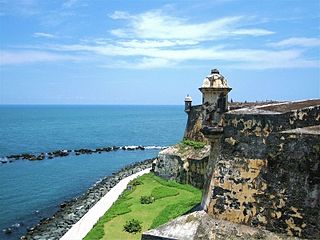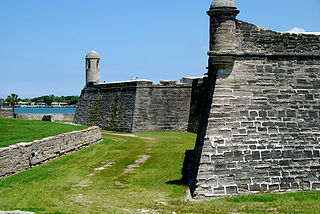 W
WThe action of 8 April 1740 was a battle between the Spanish third rate Princesa under the command of Don Parlo Augustino de Gera, and a squadron consisting of three British 70-gun third rates; HMS Kent, HMS Lenox and HMS Orford, under the command of Captain Colvill Mayne of Lenox. The Spanish ship was chased down and captured by the three British ships, after which she was acquired for service by the Royal Navy.
 W
WThe action of 14 June 1742 was a minor naval battle of the War of the Austrian Succession in which a small British squadron under Captain Richard Norris burned 5 Spanish royal galleys at the French port of Saint Tropez. Norris had surprised the galleys near Sainte-Marguerite and had chased and driven them into the French port. The British captain, in spite of alleged French neutrality, followed the Spanish vessels into the port and destroyed them at slight cost.
 W
WThe action of 18 March 1748 was a naval engagement during the War of Jenkins' Ear in which a fleet of six Royal Naval vessels captured a number of merchantman in a successful engagement against a Spanish convoy escorted by nine ships of the line and frigates.
 W
WThe Battle of Bloody Marsh took place on 7 July 1742 between Spanish and British forces on St. Simons Island, part of the Province of Georgia, resulting in a victory for the British. Part of the War of Jenkins' Ear, the battle was for the British fortifications of Fort Frederica and Fort St. Simons, with the strategic goal the sea routes and inland waters they controlled. With the victory, the Province of Georgia established undisputed claim to the island. It is now part of the U.S. state of Georgia. The British also won the Battle of Gully Hole Creek, which took place on the island the same day.
 W
WThe Battle of Cartagena de Indias took place during the 1739 to 1748 War of Jenkins' Ear between Spain and Britain. The result of long-standing commercial tensions, the war was primarily fought in the Caribbean; the British tried to capture key Spanish ports in the region, including Porto Bello and Chagres in Panama, Havana, and Cartagena de Indias in present-day Colombia.
 W
WThe invasion of Cuba took place between 4–5 August and 9 December 1741 during the War of Jenkins' Ear. A combined army and naval force under the command of Admiral Edward Vernon and Major-General Thomas Wentworth arrived off Cuba and fortified positions around their landing site at Cumberland Bay. Despite facing no serious opposition, neither commander felt prepared to advance on the Spanish settlement at Santiago de Cuba. Harassed by Spanish raids and with a mounting sick list, the British finally evacuated the island after several months of inactivity.
 W
WThe Battle of Fort Mose was a significant action of the War of Jenkins' Ear, which took place on June 26, 1740. Captain Antonio Salgado commanded a Spanish column of 300 regular troops, backed by the free black militia and allied Seminole warriors consisting of Indian auxiliaries. They stormed Fort Mose, a strategically crucial position newly held by 170 British soldiers under Colonel John Palmer. This garrison had taken the fort as part of James Oglethorpe's offensive to capture St. Augustine. Taken by surprise, the British garrison was virtually annihilated. Colonel Palmer, three captains and three lieutenants were among the British troops killed in action. The battle destroyed the fort. The Spanish did not rebuild it until 1752.
 W
WThe Battle of La Guaira or La Guayra, took place on 2 March 1743 in the Caribbean, off the coast of La Guaira, present day Venezuela. La Guaira was a port of the Royal Gipuzkoan Company of Caracas, whose ships had rendered great assistance to the Spanish navy during War of Jenkins' Ear in carrying troops, arms, stores and ammunition from Spain to her colonies, and its destruction would be a severe blow both to the Company and the Spanish Government. A British expeditionary fleet under Sir Charles Knowles was defeated, and the expedition ended in failure. 600 men were killed, among whom was the captain of HMS Burford, and many of the ships were badly damaged or lost. Knowles was therefore unable to proceed to Puerto Cabello until he had refitted.
 W
WThe Battle of Gully Hole Creek was a battle that took place on July 18, 1742 between Spanish and British forces in the Province of Georgia, resulting in a victory for the British. Part of a much larger conflict, known as the War of Jenkins' Ear, the battle was for control of St. Simons Island, the British fortifications of Fort Frederica and Fort St. Simons, and the strategic sea routes and inland waters they controlled. After the victory, the Province of Georgia established undisputed claim to the island, which is now part of the U.S. state of Georgia. The better-known Battle of Bloody Marsh, a skirmish also won by the British, took place on the island the same day.
 W
WThe Battle of Havana was a naval engagement that took place between the British Caribbean squadron and a Spanish squadron based near Havana during the War of Jenkins' Ear. The battle occurred on the morning of the 12th and ended on 14 October 1748. The belligerents consisted of two squadrons under the command of Admiral Don Andres Reggio of the Spanish Navy and Admiral Sir Charles Knowles of the Royal Navy, respectively. The British succeeded in driving the Spanish back to their harbour after capturing the Conquistador and ran the vice-admiral's ship Africa on shore, where she was blown up by her own crew after being totally dismasted and made helpless. Although the advantage had clearly been with Knowles, he failed to use this to deliver a decisive blow. The battle was the last major action in the War of Jenkins' Ear which had merged with the larger War of the Austrian Succession.
 W
WThe Battle of Porto Bello, or the Battle of Portobello, was a 1739 battle between a British naval force aiming to capture the settlement of Portobelo in Panama, and its Spanish defenders. It took place during the War of the Austrian Succession, in the early stages of the war sometimes known as the War of Jenkins' Ear. It resulted in a popularly acclaimed British victory.
 W
WThe Raid on Brunswick was a military engagement that took place at the tail end of the War of Jenkins' Ear from September 3 to 6, 1748. Brunswick Town in the Province of North-Carolina was attacked by Spanish privateers. The Spanish raiders were eventually driven off which resulted in the destruction of one of their vessels. This was the final engagement of the war between Great Britain and Spain and resulted in a British colonial victory.
 W
WThe 2nd battle of Santiago de Cuba, which took place on 9 April 1748, was a failed attempt by elements of the British Royal Navy under Rear-Admiral Charles Knowles to force the entrance of the port of Santiago de Cuba with the aim of striking a blow to the Spanish trade and privateering, since Santiago was a major base of the Spanish privateers in the Caribbean. Two British ships of line were put out of action by the batteries of Morro Castle and had to be towed to open sea. The remaining British warships retreated soon after.
 W
WThe Siege of St. Augustine was a military engagement that took place during June–July 1740. It was a part of the much larger conflict known as the War of Jenkins' Ear, between Great Britain and Spain.
 W
WThe voyage of the Glorioso involved four naval engagements fought in 1747 during the War of the Austrian Succession between the Spanish 70-gun ship of the line Glorioso and several British squadrons of ships of the line and frigates which tried to capture it. The Glorioso, carrying four million silver dollars from the Americas, was able to repel two British attacks off the Azores and Cape Finisterre, successfully landing her cargo at the port of Corcubión, Spain.